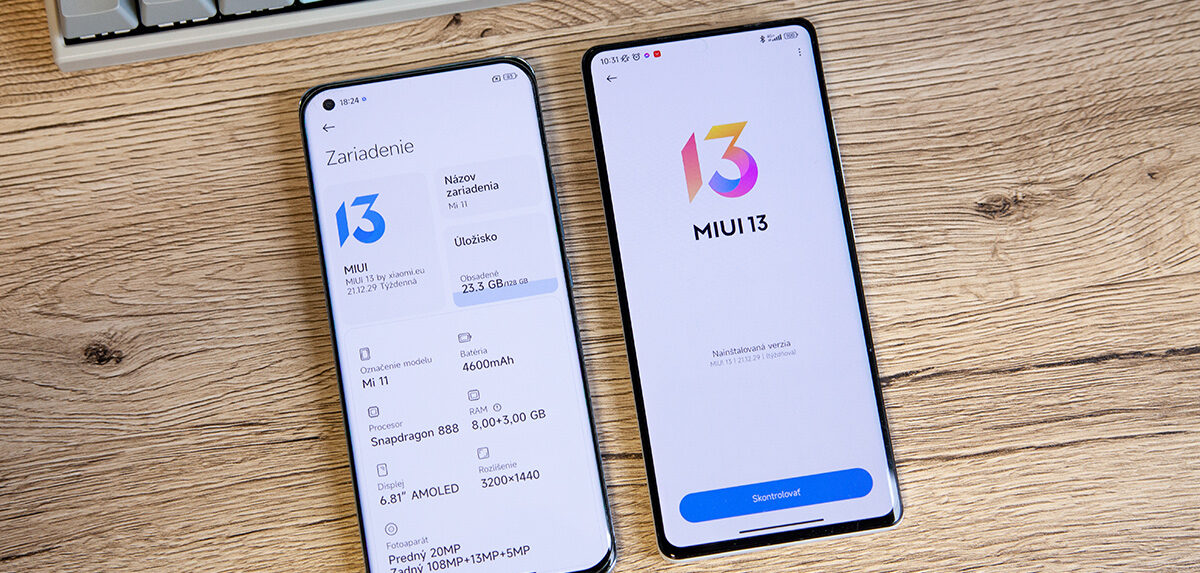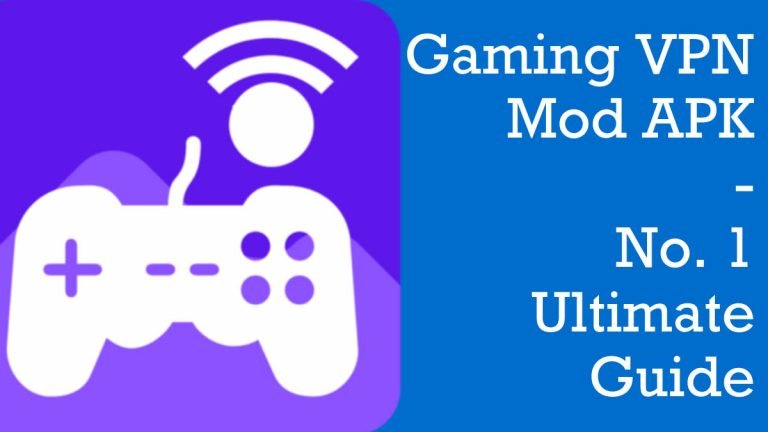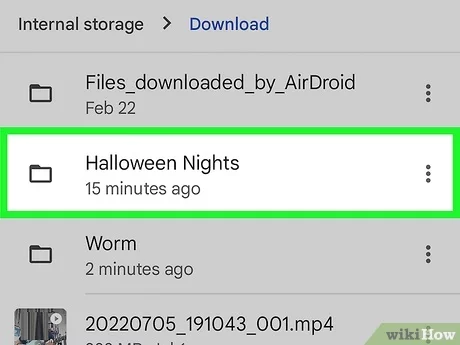Best Method to Downgrade Miui 14 to 13

Introduction
Want to downgrade miui 14 to 13 and you found that the latest MIUI 14 isn’t quite to your liking and you’re looking to return to the more familiar MIUI 13, then this guide is here to assist you. Though the process of downgrading might seem daunting, by following these steps, you can smoothly return to a previous version of MIUI. But remember, preparing correctly is key to ensuring everything goes as planned.
Overview of MIUI 14 and reasons for downgrading to MIUI 13
MIUI 14, the newest iteration of Xiaomi’s custom Android skin, offers an array of new features and improvements. However, new doesn’t always mean better for every user. You might be experiencing compatibility issues with certain apps, or perhaps you’re missing a feature that was changed or removed in the update. Battery life and performance can also be areas where you might prefer the older version. Whatever your reason, downgrading is an option available to you.
Precautions before downgrading and the importance of backing up data
Before you begin the downgrade process, it’s essential to take certain precautions:
- Backup: You’re going to lose all your personal data such as files, images, videos, and applications. Ensure everything important is backed up to an external device or cloud storage.
- Bootloader Unlocked: Confirm that the bootloader on your device is unlocked. Without this step, you cannot proceed with downgrading from MIUI 14 to MIUI 13.
- Fastboot ROM Files: Download the correct fastboot ROM files for your device’s specific model. These files are critical for downgrading your device.
It cannot be overstated how crucial these steps are. Skipping any of them can lead to an unsuccessful downgrade, or worse, a bricked device. Take the time to prepare adequately, and you’ll be well on your way to restoring your device to MIUI 13. [1][2][3][4]

Checking Device Compatibility
How to determine if your device supports MIUI 13
Before diving into the steps of downgrading your MIUI version, you need to ensure that MIUI 13 is compatible with your device. To do this, follow these points:
- Visit the official Xiaomi firmware website to check if MIUI 13 is listed for your specific phone model.
- Pay attention to your phone’s global or regional version to download the correct ROM, as flashing the wrong ROM may cause issues.
- If you’re unsure, you can go to Xiaomi’s forums or contact customer support to confirm whether your device can support MIUI 13.
Finding the appropriate MIUI 13 Fastboot ROM for your device
Once you’ve confirmed that MIUI 13 supports your device, the next step is to find and download the specific ROM:
- Head over to the official MIUI download page or a reputable source for downloading Xiaomi firmware.
- Ensure you match the ROM’s version with your device’s model number—both must correspond for a proper downgrade.
- Look for the “Fastboot ROM” option, since this is what you’ll need to flash MIUI 13 through the Mi Flash tool.
By downloading the correct Fastboot ROM, followed by the instructions provided above, you’re all set to commence the downgrade process. Remember, these steps are crafted to make your experience as seamless as possible, so it’s recommended to follow them with caution. Avoid rushing through them, and if any part of the process isn’t clear to you, don’t hesitate to seek help from the robust Xiaomi community or certified technicians. Reverting to MIUI 13 should be smooth sailing when you have the right tools and information in hand. [5][6][7][8]

Preparation
Before you begin the process of downgrading from Android 14, you must ensure that your Google Pixel device is ready for the procedure. Here’s what you need to do:
Enabling USB Debugging and OEM Unlocking on your phone
– To start off, it’s essential to enable Developer Options on your Pixel phone. Head over to Settings, scroll down to the bottom, and tap on ‘About phone’.- Look for the ‘Build number’ and tap on it seven times. A message will pop up indicating that you are now a developer.- Go back to the main Settings screen and enter into the system by tapping on ‘System’, then ‘Advanced’, and select ‘Developer options’.- In the Developer options, toggle ‘USB debugging’ to ‘On’. This allows your computer to communicate with your Android device during the flashing process.- Similarly, ensure ‘OEM unlocking’ is enabled. This is crucial as it allows the bootloader to be unlocked, making downgrading possible.
Installing Mi Flash Tool and ADB drivers on your PC
– Next, you’ll need to install the Xiaomi Mi Flash Tool and ADB drivers on your computer. These are the software tools that will communicate with your Pixel and perform the actual downgrade.- You can download the Mi Flash Tool from Xiaomi’s official website or any trusted source.- Follow the instructions provided for installing the tool on your PC. It’s usually a straightforward setup process.- Moreover, download and install ADB drivers if you haven’t already. These drivers are necessary for your computer to recognize your Pixel device.
Remember, each step is vital, and a single misstep could potentially cause problems with your device. It’s similar to following a recipe — you wouldn’t start baking a cake until you have all the ingredients and tools laid out on the counter, right? The same principle applies here. So, take your time, double-check each action, and only move forward when you’re ready. If you run into any issues or if anything seems unclear, the Android and Pixel communities are great resources for help and guidance. [9][10][11][12]

Booting into Fastboot mode
Now that you’ve prepared your device by enabling the necessary settings and installing the essential tools on your PC, it’s time to initiate the fastboot mode. This prepares your smartphone for the flashing procedure, which is required for downgrading to MIUI 13 from MIUI 14.
Step-by-step instructions on how to boot your phone into Fastboot mode
- First, ensure that your phone is completely turned off. You want a clean slate to start the process.
- Next, press and hold the Power button and the Volume Down button on your device simultaneously.
- Keep holding these buttons down until you see the Fastboot logo appear on the screen. Once it does, release both buttons.
- Your phone is now in Fastboot mode, ready for the downgrade process.
This combination puts your phone into a state where you can install firmware and make changes to the system that aren’t possible within the regular operating mode. In Fastboot mode, the phone communicates with the PC via a wired connection, which will allow you to flash the MIUI 13 Fastboot ROM using the Mi Flash tool.
Understanding the Fastboot mode interface
- As you look at your phone’s screen, you’ll notice it’s different from usual. You’ll see a minimalist interface displaying the Android robot and the word “Fastboot.”
- There may be a few options or stats displayed underneath, such as the device’s status or the battery level — this is normal.
- Keep in mind that Fastboot mode is a sensitive environment. This is where critical operations can be executed, so it should be navigated with care and only when following trusted instructions.
In Fastboot mode, your phone is essentially on standby for commands from the Mi Flash tool on your PC. Keep the phone connected via USB and follow the downgrading instructions closely. If you’ve never used Fastboot mode, it might seem daunting at first, but carefully follow the steps provided, and you’ll soon be back to MIUI 13 with your preferences intact. [13][14][15][16]

Flashing MIUI 13 ROM
Once your Xiaomi Redmi or Poco device is in Fastboot mode, you’re ready to proceed with flashing the MIUI 13 ROM. It’s crucial to follow the steps carefully to ensure a successful downgrade without bricking your phone.
Steps for using Mi Flash Tool to flash the MIUI 13 ROM onto your phone
- Download the MIUI 13 Fastboot ROM for your particular Xiaomi model from the official MIUI website or a trusted source.
- Extract the downloaded ROM to a folder on your computer.
- Install the Mi Flash Tool on your PC if you haven’t already done so. You can get it from Xiaomi’s official developer website.
- Launch the Mi Flash Tool and sign in with your Xiaomi account credentials.
- Switch off your phone and ensure it’s in Fastboot mode.
- Connect your device to your PC using a USB cable.
- On the Mi Flash Tool, click on “Select” and navigate to the folder where you’ve extracted the MIUI 13 ROM, then click on “Flash.”
- The flashing process will commence. Do not disconnect your phone or use your PC during this time. This can take several minutes, so be patient.
- Once complete, your phone will automatically reboot with the MIUI 13 version installed.
Troubleshooting common issues during the flashing process
- If the Mi Flash Tool doesn’t recognize your device, verify the USB drivers on your PC and try different USB ports or cables.
- Error messages during flashing might indicate a corrupted ROM download. Redownload the Fastboot ROM and attempt the process again.
- Should the flashing process fail or get stuck, reboot both your phone and PC, then try again ensuring that your device is properly in Fastboot mode.
Remember, downgrading software carries risks and might void your warranty. Backup your data before you begin. If you’re unsure or encounter persistent problems, consider seeking help from a professional or the Xiaomi community forums. [17][18][19][20]

Initial Setup and Configuration
Completing the initial setup after downgrading to MIUI 13
If you’ve successfully downgraded to MIUI 13, you’ll need to set up your Xiaomi device again. Just like new, it’ll greet you with setup screens. Here’s what to expect:
- Welcome screen: Choose your language and region.
- Connect to Wi-Fi: Find your network, enter the password, and connect.
- Google account: Sign in with your Google credentials or create a new one.
- Mi Account: Log in to your Mi account to sync your previous data and settings.
- Permissions and settings: Agree to the terms and conditions, and configure location services and user experience program.
- Fingerprint setup: Register your fingerprint if your device supports this feature.
- Additional settings: Customize your preferences for themes, wallpapers, and default apps.
Remember, each step is important to personalize and secure your device.
Restoring backed up data and customizing settings
After the initial setup, it’s time to restore the data you’ve backed up before the downgrade. Here’s how you can restore and customize your MIUI 13 experience:
- Restore from backup: Access the settings and look for the Backup & reset option. Choose Restore from backup, and select your most recent backup to return your apps, settings, and files.
- Re-download apps: Head over to the Google Play Store to reinstall any additional apps you need.
- Customize your settings: Go through settings to adjust display brightness, sound profiles, and notification preferences to suit your usual preferences.
- Test functionalities: Check your Wi-Fi, Bluetooth, camera, and other basic features to ensure they are working properly after downgrade.
Always approach each step with patience. If you encounter any issues, a quick search online for your specific problem can often lead to helpful troubleshooting tips from the community. Remember, you’re not alone in this; the Xiaomi user community is quite active and supportive. [21][22][23][24]

Post-Downgrade Tips and Tricks
Exploring MIUI 13 features and optimizations
Once you’ve settled back into MIUI 13, take your time to explore the features and optimizations available to you. This version is known for its stability and smooth user experience. Dive into the Security app to scan your device for optimization tips. Use the MIUI cleaner to rid your phone of unnecessary files, which can help boost performance. Additionally, MIUI 13 comes with a well-designed control center—swipe down from the right corner to access quick settings and from the left for notifications. These tweaks refined in MIUI 13 will streamline your daily phone use.
Discover new themes in the Themes app to customize icons, wallpapers, and system sounds. Also, don’t overlook the Privacy protection settings—MIUI 13 has robust options to control how apps access your data.
Maximizing performance and battery life on MIUI 13
To ensure your device runs at peak performance with optimal battery life, consider the following:
- Maintain a clutter-free home screen. Too many widgets or live wallpapers can slow down your device.
- Use the Battery saver mode to extend the life of your battery when needed, and check the Battery usage stats to see which apps are draining your battery the most.
- Disable auto-start for non-essential apps. Go to Settings > Apps > Manage apps and tap on individual apps to change their auto-start settings.
- Regularly update your apps. App updates often include performance improvements and bug fixes.
- Limit background processes. In the Developer options (tap repeatedly on the MIUI version in About phone to enable), there’s a setting to limit processes which can free up resources.
By actively managing these settings, you will not only get the most out of MIUI 13’s capabilities but also enjoy a more efficient and longer-lasting device. Engage with the community forums for more hidden features and tips specific to your Xiaomi, Redmi, or POCO device. [25][26][27][28]

Reverting to MIUI 14 (Optional)
Instructions on how to re-install MIUI 14 if needed
If you find that you’re missing some of the features or optimizations in MIUI 14 and want to go back to the latest version, here are the steps to re-install MIUI 14:
- Make sure your phone’s bootloader is unlocked. Without unlocking the bootloader, you won’t be able to install MIUI 14.
- Download the MIUI 14 Fastboot ROM file from the official Xiaomi website or another reliable source.
- Connect your phone to your computer and transfer the MIUI 14 Fastboot ROM file to the root directory of your phone’s storage.
- Now, reboot your phone into Fastboot mode. This can usually be done by holding down the Power button and Volume Down button simultaneously.
- Once your phone is in Fastboot mode, open the Command Prompt or Terminal on your computer and navigate to the folder where you have the MIUI 14 Fastboot ROM file.
- Type the following command to install MIUI 14: fastboot flash fastboot .img (replace with the actual name of the ROM file).
- Wait for the installation process to complete. Once it’s done, you can reboot your phone and start using MIUI 14 again.
Understanding the risks and precautions of reverting back to MIUI 14
Before you decide to revert back to MIUI 14, it’s important to understand the risks and take necessary precautions:
- Reverting back to a previous version of the operating system may result in data loss. It’s recommended to backup your important files and data before proceeding with the revert.
- Rolling back to MIUI 14 will erase all the data on your phone. Make sure to create a backup of your files, contacts, and any other important data before downgrading.
- Reverting to an earlier version may also introduce security vulnerabilities. It’s recommended to keep your phone updated with the latest security patches and use reliable antivirus software.
- In case of any issues during the downgrade process, it’s advisable to seek assistance from official Xiaomi support or community forums to ensure a smooth transition.
Remember, downgrading your phone’s operating system should only be done if you have a specific reason and are aware of the risks involved. Make sure to follow the instructions carefully and proceed with caution. [29][30][31][32]

Reverting to MIUI 14 (Optional)
Instructions on how to re-install MIUI 14 if needed
If you find that you’re missing some of the features or optimizations in MIUI 14 and want to go back to the latest version, here are the steps to re-install MIUI 14:
- Make sure your phone’s bootloader is unlocked. Without unlocking the bootloader, you won’t be able to install MIUI 14.
- Download the MIUI 14 Fastboot ROM file from the official Xiaomi website or another reliable source.
- Connect your phone to your computer and transfer the MIUI 14 Fastboot ROM file to the root directory of your phone’s storage.
- Now, reboot your phone into Fastboot mode. This can usually be done by holding down the Power button and Volume Down button simultaneously.
- Once your phone is in Fastboot mode, open the Command Prompt or Terminal on your computer and navigate to the folder where you have the MIUI 14 Fastboot ROM file.
- Type the following command to install MIUI 14:
fastboot flash fastboot .img(replace with the actual name of the ROM file). - Wait for the installation process to complete. Once it’s done, you can reboot your phone and start using MIUI 14 again.
Understanding the risks and precautions of reverting back to MIUI 14
Before you decide to revert back to MIUI 14, it’s important to understand the risks and take necessary precautions:
- Reverting back to a previous version of the operating system may result in data loss. It’s recommended to backup your important files and data before proceeding with the revert.
- Rolling back to MIUI 14 will erase all the data on your phone. Make sure to create a backup of your files, contacts, and any other important data before downgrading.
- Reverting to an earlier version may also introduce security vulnerabilities. It’s recommended to keep your phone updated with the latest security patches and use reliable antivirus software.
- In case of any issues during the downgrade process, it’s advisable to seek assistance from official Xiaomi support or community forums to ensure a smooth transition.
Remember, downgrading your phone’s operating system should only be done if you have a specific reason and are aware of the risks involved. Make sure to follow the instructions carefully and proceed with caution.
Conclusion
Summary to downgrade miui 14 to 13 and final thoughts
In conclusion, reverting back to MIUI 14 is an optional step for those who wish to go back to the latest version. The process involves unlocking the bootloader, downloading the MIUI 14 Fastboot ROM, and installing it using fastboot commands.
It’s important to note the risks and precautions associated with downgrading. Data loss and security vulnerabilities may occur, so it’s advised to backup your important files and keep your phone updated with the latest security measures.
Seeking assistance from official Xiaomi support or community forums can also help ensure a smooth transition and resolve any issues that may arise during the process.
Highlighting the benefits of using MIUI 13 and addressing frequently asked questions
While MIUI 14 may offer new features and optimizations, MIUI 13 also has its merits. Some users prefer the stability and familiarity of MIUI 13, as it may provide a better overall user experience.
Here are some frequently asked questions about downgrading from MIUI 14 to MIUI 13:
Ultimately, the decision to downgrade to MIUI 13 is a personal one based on individual preferences and needs. Consider the benefits and risks before making a choice. [33][34][35][36]



2 Comments